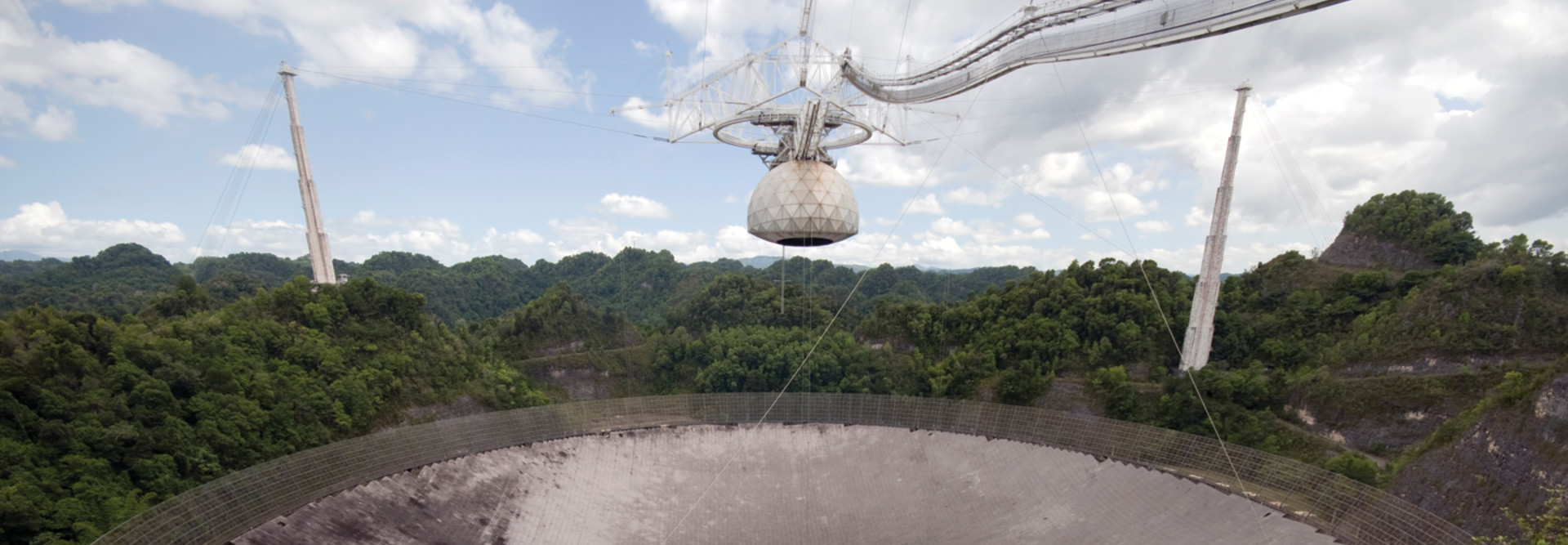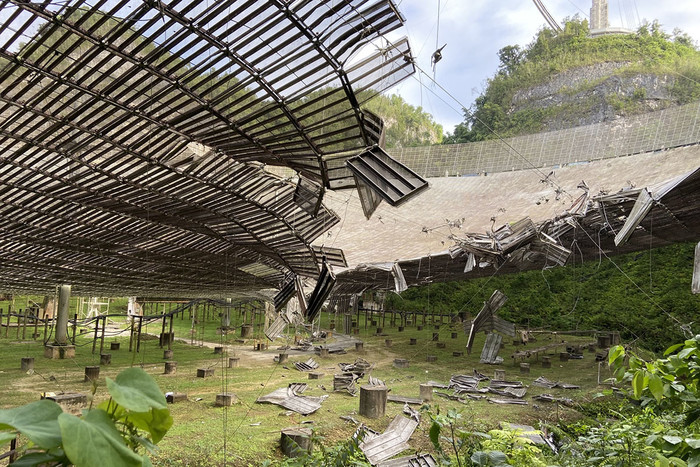Weakened by Hurricane Maria in 2017 and even more by an earthquake swarm at the end of 2019, the iconic radio telescope at the Arecibo Observatory — home to the second-largest radio telescope in the world — has fallen to earth.
It was no surprise; the National Science Foundation had already decided to decommission the damaged observatory after cables that held up the telescope began to snap this summer and could not be repaired safely.
Still, the actual, sudden failure on Dec. 1 that dropped the 900-ton telescope into the 1,000-foot-wide dish 450 feet below was shocking.
“I was screaming,” former senior research associate Jonathan Friedman, who heard the collapse, told The Associated Press. “I don’t have words to express it. It’s a very deep, terrible feeling.”
Arecibo Is Connected to Nobel Prizes and TV Fame
Arecibo’s radio telescope, tucked into the mountains and rainforests of central Puerto Rico, is one of the most famous pieces of government technology, familiar to nonscientists from the movie Contact and TV’s The X-Files.
In its 57 years, the observatory was the source of important scientific discoveries, including the Nobel Prize-winning discovery of the first binary pulsar, the first radar maps showing the surface of cloud-covered Venus and the first planets found outside our solar system. It was also a key tool in spotting near-Earth asteroids.
Damage underneath Arecibo Observatory’s dish after the radio telescope collapse. Photo: University of Central Florida
According to Scientific American, “Arecibo was not only capable of receiving radio waves from the great beyond but also transmitting them. This made the observatory one of the few facilities able to bounce radar beams off planets, moons and asteroids to make remarkably high-resolution measurements of their shapes and surfaces.”
Arecibo had been the largest radio-telescope in the world until China built its Five-hundred-meter Aperture Spherical Telescope (FAST) in 2016.
EXPLORE: Federal technology spans from volcanos to deep beneath the surface of the ocean.
Observatory Repairs Planned for the Future
The NSF had planned to repair the observatory before the cables began to fail, and as recently as September had provided funding for a next-generation ultra-wideband receiver that would have upgraded capabilities and cut maintenance costs, says Ralph Guame, director of NSF’s astronomy division.
The agency is optimistic that the telescope and observatory can be fixed.
“NSF is not closing Arecibo Observatory,” Guame says. “We have instructed the operator to repair the lidar facility (used to make high-resolution maps) and the 12-meter telescope. And we will be looking for ways to bring other parts of the observatory online as soon as possible.”
Rebuilding in Puerto Rico, itself still recovering from Hurricane Maria, would be expensive, but the U.S. territory already has the infrastructure needed for a large observatory, including roads and power lines to the site.
The NSF “has a very well-defined process for funding and constructing large-scale infrastructure, including telescopes,” Guame says. “It’s very early for us to comment on the replacement."












